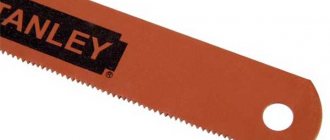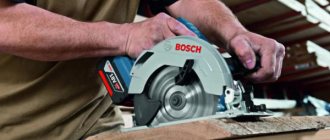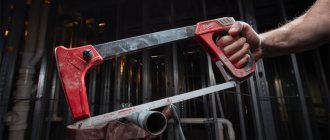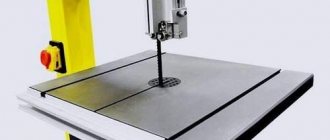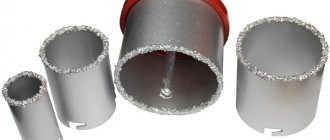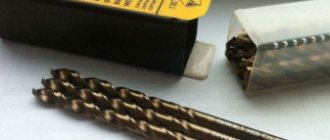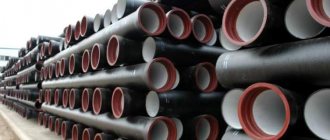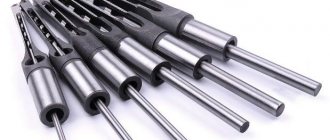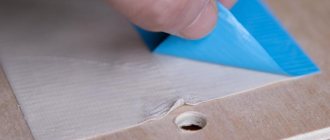How to properly drill a hole in a pipe?
Drilling holes in pipes is a fairly simple task that can be done even without specially designed machines or other complex tools. However, before drilling a hole in any pipe, you need to, firstly, understand the features of drilling, and secondly, study the safety rules. The best place for drilling is a garage or some other suitable room for this. Punching and drilling holes must be carried out by a master exclusively wearing protective gloves and goggles. The drill must be checked for sharpness and be sure to securely fasten it.
It is advisable to drill holes in pipes on a workbench, since careless handling can damage the surface of the table.
How to drill hardened steel at home
To improve the basic characteristics of the metal, it is often hardened. This technology involves increasing the hardness of the product due to strong heating of the metal and its rapid cooling. In some cases, after heat treatment it is necessary to perform drilling. By increasing this characteristic, drilling hardened metal becomes more difficult. Let's take a closer look at all the features of drilling hardened steel.
How to drill through hardened steel
Drilling a hole in hardened steel
The widespread question of how to drill through hardened steel can be associated with the fact that when using conventional technology, the tool quickly becomes dull and becomes unusable. That is why you need to pay attention to the features of drilling hardened alloy. Among the features of the technology, we note the following points:
- It is necessary to properly prepare the hardened workpiece.
- In some cases, a special tool is required.
- Coolant is being used.
If necessary, you can make a drill for hardened steel with your own hands, which requires certain equipment and skills. However, in most cases, a purchased version is used, since it will cope better with the task when cutting hardened steel.
Hardened steel drilling process
Nuances when drilling
The technology in question has a fairly large number of features that need to be taken into account. Drilling of hardened metal is carried out taking into account the following points:
- Before carrying out work, pay attention to the hardness of the surface. This parameter is used to select the most suitable drill. Hardness can be determined using a variety of technologies.
- During drilling, a large amount of heat is generated. This is why rapid wear of the cutting edge occurs. In this regard, in many cases, cooling liquid is supplied to the cutting zone.
- When cutting difficult-to-cut material, it is necessary to sharpen the cutting edge from time to time. For this, a conventional sharpening machine or a special tool is used. Only diamond-coated wheels are suitable as an abrasive.
Steel Drilling Tool
There are a variety of methods for cutting hardened steel. Some of them significantly simplify the processing. Only by taking into account all the nuances can the quality of the resulting hole be improved.
Useful drilling techniques
A variety of technologies can be used to work with hardened steel. The most common technologies are characterized by the following features:
- Surface treatment with acid. This technology is characterized by long-term use, since it takes quite a lot of time to reduce the surface hardness. Sulfuric, perchloric or other acid can be used for etching. The procedure involves creating a lip that will contain the substance used in the cutting zone. After prolonged exposure, the metal becomes softer, and it will be possible to drill using the conventional version.
- You can use a welding machine to achieve your goal. When exposed to high temperatures, the metal becomes softer, which greatly simplifies the procedure.
- Most often, a special drill is used. There are versions on sale that can be used for processing hardened steel. In their manufacture, metal with increased resistance to wear and high temperatures is used. However, the complexity of manufacturing and some other points determine that the cost of a special tool is quite high.
In addition, to achieve this goal, a punch is often purchased. It can be used to make a small hole, which will simplify further drilling.
General recommendations for drilling pipes of all types
Prepare tools that will help you drill a hole in the pipe:
- Drill with a drill of suitable diameter.
- A block of wood.
- Vise.
- File.
- Hammer.
Depending on what material the pipe in which you need to drill a hole is made of, the work may require the use of additional devices and have a number of differences. However, there are several general requirements, rules and recommendations, following which you can drill a hole in a pipe made of any material.
To drill a hole in pipes, you will, among other things, need a wooden block. Select a product of such dimensions that its horizontal line is the same as the outer diameter of the pipe being processed. The vertical should be approximately 50-100 mm. Drill a through vertical hole with the required diameter in the block. Clamp the block with the pipe in a vice. The block must be clamped from above, and the pipe being processed from below. The prepared hole in the wooden block will serve as an elementary guide. Thanks to it, the drill will not be able to move to the side during operation. Take a drill, insert the drill bit into the hole and get to work. Although manipulating the block will take some of your time, it will save you from problems with symmetry in the future. With a block you can't do absolutely anything other than make a straight and neat hole.
While drilling, you should try not to move the drill to the sides. Because of this, the hole in the block will expand, and behind it, the hole in the pipe being processed will become uneven. In just a few minutes the required hole in the pipe will be ready.
In some situations, it becomes necessary to bore the prepared hole. This operation can be successfully performed using a round file. However, using a file will require you to spend a lot of time and effort. It is much easier to prepare a drill of a larger diameter and use it to create a suitable hole.
Diagram of drilling holes using a simple wooden jig.
Sometimes you need to make square hole This task requires a little more effort and some ingenuity. However, everything can be done with your own hands. First you need to prepare a round hole according to the diagram described above. After this, using the same file, you can give the resulting hole the desired square shape. Not only is the method quite painstaking, but it also does not allow the work to be completed with high accuracy. Therefore, in some situations, it is more advisable to use a square-shaped rod with the required diameter and, with its help, turn a round hole into a square one. Gradually the rod will do its job. At the end of the work, burrs may remain. They are very easy to get rid of using an ordinary file.
Thus, these simple tips and tricks will help you make the required number of holes in the required shape and size without any problems. The most important thing is to approach the matter with maximum responsibility and determination. It is also important to know that the drill will get quite hot during operation. And when heated, metal tends to expand. Therefore, it is necessary to periodically spray the drill with water: this will extend its service life and allow you to obtain a hole of the diameter required.
However, these are general recommendations. And due to the fact that the farm uses pipes from different materials, it is necessary to know about the processing features of each of them.
Drill selection
Twist drills, which feature a vertical shaft with two flutes, are quite common. Due to the specific arrangement of the grooves, a cutting edge is formed. Among the features of the choice, we note the following points:
- Victory training was quite common. Can be used to work with various hot alloys. However, a surface with too high a hardness cannot be processed with such a tool.
- The choice is also made in terms of diameter. Keep in mind that getting a large diameter hole is quite difficult. A larger diameter embodiment is much more expensive due to the large amount of material used in its manufacture.
- Attention is paid to the angle of sharpening, the purpose of the product and the type of material used in production. For example, cobalt variants are characterized by higher resistance to high temperatures.
- It is recommended to pay attention to products only from well-known manufacturers. This is due to the fact that the Chinese versions are made using low quality materials. However, this offer is much cheaper and can be used for short-term or one-time work.
- When choosing a drill, you can follow the markings. Using it, you can determine what materials were used in production. The diameter of the hole that can be made using the tool is also indicated.
READ Can You Cut Along a Miter Saw?
Steel drill
Features of working with plastic pipes
There are no difficulties with plastic pipes either. First you need to mark the drilling location on the pipe, then secure it, preferably in a vice, and position it so that it faces you. The pipe must be secured so that it does not move. This is why a vice is the most preferred option. However, be careful that the plastic does not deform under the influence of the applied forces.
Install a drill of the appropriate diameter on the drill. In this case you will need a guide. You can use a block, as in the previously discussed method. Turn on the drill at low speed and carefully, without displacement, begin to insert the drill into the pipe cavity. You can get rid of irregularities along the edges of the hole using a file or a sharp knife.
READ Sharpening a Wood Circular Saw
Step-by-step instructions for processing cast iron pipe
Working with cast iron will require the use of the following tools:
- Drills and drill bits with pobedite bits.
- Marker.
- File.
There are two types of cast iron pipes. The first of them has both smooth ends, and the second has one of the ends smooth, and the second is equipped with a detachable connection. Before using pipes, be sure to ensure that the location chosen for them complies with approved building codes. It is better if there are no slopes or turns. Currently, cast iron is an indispensable material for the manufacture of a wide variety of products. Therefore, its drilling and cutting are very important operations.
By drilling cast iron it is necessary to understand the creation of holes using a device specially designed for this purpose, i.e. drill. Many craftsmen have to face this problem. And quite often they don’t know how to deal with it correctly. In most cases, gray cast iron is quite easy to machine, and when drilling into a pipe made of such material, there is no need to use lubricants and coolants. However, pipes may have their own characteristics. And in some situations you have to make more efforts.
To work with cast iron, choose a metal drill with an angle of about 118 degrees. If you do not have special tools for processing cast iron, proceed according to the following scheme: first take the smallest drill in diameter, prepare a hole , then place a drill of a larger diameter on the drill, make a new hole in place of the old one and continue this until you have drilled to the required diameter.
If the drill starts to get very hot during operation, you can lubricate it with water. To drill cast iron in the absence of an electric drill, you can use a regular one, gradually increasing the speed. During operation, you need to drill at low speeds, without putting too much pressure on the drill.
For drilling at home, drills with pobedit bits are best suited. You need to work with them at low speeds, making sure to maintain vertical force. In addition, they require frequent cooling of the cutting attachment. Do not allow it to blacken or overheat.
Professionals in their field, as a rule, work on special machines and use working tools with appropriate sharpening. However, if you do not need to create holes in a cast iron pipe very often, there is no point in purchasing such a tool.
Due to the fact that when processing cast iron, fine chips and a large amount of dust are released, general safety recommendations should be followed during the work:
- The work area must have good ventilation.
- Drilling can only be done while wearing a respirator or at least a cotton-gauze bandage.
- When working, be sure to wear safety glasses with closed sides.
- You can only work with gloves, special clothing and preferably a hat.
Making a home drill
If necessary, you can make drills from hot steel. Among the main recommendations for such work:
- The rods selected were tungsten and cobalt alloys. People call this metal victorious. Compared to a conventional drill, this option is characterized by increased wear resistance.
- To finish the workpiece, you need to fix it with a little pressure. Otherwise the work will be quite difficult.
- A diamond stone is needed to grind such a surface. A normal one will not withstand long-term work.
- The end surface is sharpened so that a surface resembling a flat-head screwdriver is obtained. The cutting edges are then sharpened to produce a sharp tip.
To reduce the surface workability, add oil. This ensures long-lasting processing by reducing friction and lowering temperatures.
Homemade workouts for cripples
In conclusion, we note that processing hot steel should only be carried out using special tools. The work requires a drilling machine, since manual drilling will not allow you to get the required hole.
If you find an error, select a piece of text and press Ctrlenter.
Hardened steel can be drilled using carbide drills.
Such drills can be made by hand from tungsten-cobalt rods (TC 
To drill into hot steel (sheet of dust), you need to drop oil onto the drill pad and drill at low speeds. You may need to use multiple exercises. they quickly sit down. There is no need to cover the sheet as it may burst. steel is brittle.
You can learn more about how to drill HSS blade (CSU steel) in this video:.
There are several options: tap out the steel, then drill with a regular metal drill bit and re-harden the steel.
You can buy a special carbide drill bit for drilling hard steel,
The hole can be burned with acid (for example, sulfur), it can be drilled with drills (using a drill) in concrete, but even new ones must be sharpened, the drill must be sharp.
The rods can be drilled and hardened.
It can be burned by welding if this option is suitable.
As for how it all depends on the option chosen.
If you bought special drills, make a mark, fix the workpiece in which we will make a hole (for example, in a vice or fix it, press your leg against a horizontal surface), set the drill at low speed and start drilling, do not put pressure on the drill, cool periodically drill (oil as an option).
It is better to drill with two drills, the first drill of a smaller diameter, the second is preferable.
Source
Guide to Drilling Metal Pipe
Working with metal products in general and pipes in particular requires compliance with a number of rules. It should be borne in mind that if there is a need to create holes of large diameter, you must first use a drill with a diameter 1-3 mm smaller than planned and only then start working with a drill of the main size.
As with previous pipes, it is necessary to work at low speeds. To prevent chips from jamming the drill during operation, release them periodically. In order to increase productivity, professionals recommend working with a lubricant - machine oil if a hole is drilled in a steel pipe, and soap emulsion if copper is being processed.
To ensure that the pipe is securely fastened in the vise, you can install a nut between each side of the pipe being processed and the vise jaws.
In order for drilling to be as accurate as possible, use the block described earlier. If you wish, you can use a metal block with an M-shaped section and several pre-prepared holes of different sizes for drills. Instead, an ordinary wooden block with a pre-prepared hole the size of the pipe being processed and several different-sized holes will do. The drilling itself is performed as in previous cases, at low speeds, without swaying, shifting, etc. Good luck!
Cleaning and degreasing glass.
In order to drill glass efficiently, it must be carefully prepared for the upcoming procedure. To this end, use liquid soap, a sponge and hot water to wash the workpiece, removing dust, dirt, grease stains and other substances from it. Then using 96 percent alcohol, turpentine, lighter gasoline, white spirit, acetone, thinner, etc. degrease the glass surfaces, and then wipe dry with a soft flannel, bringing to a shine.
Marking.
Before drilling, the proposed hole must be marked with a marker and the drilling working area must be marked.
How to drill a hacksaw blade through metal?
A hacksaw blade for metal is one of those parts that quickly deteriorates and requires frequent replacement. However, knowing the subtleties of choosing a product, you can ensure long and high-quality work!
Universal saw – hacksaws for all occasions
Even a seemingly ordinary hacksaw can cause confusion in the average consumer; he will find many different tools on the shelves! To simplify the choice, we list three main types of tools into which, depending on their purpose, they are divided:
- Hacksaws are a narrow saw with thin teeth. It has a characteristic, recognizable appearance, mainly a C-shaped or U-shaped frame, between the ends of which the canvas is tensioned. Older models of hacksaws often have a handle that runs parallel to the blade; modern products are equipped with a much more ergonomic “pistol” handle.
- A hacksaw is a classic carpentry tool used for sawing wooden building materials, as well as sheets of plywood. As a rule, carpentry hacksaws have a wide, beveled working part, on the edge of which there are cutting teeth. The teeth are set alternately left and right to make cutting easier. At the same time, straight teeth in some models help remove chips from the cutting line.
- A hacksaw for concrete is similar in appearance to a joiner's saw, with the difference that the first tool has larger teeth. Quite often they are tipped with carbide metals, which makes it possible to saw foam blocks and sand-concrete structures with this tool.
The quality of the tool is determined by the following indicators:
- Blade length - depending on the size of the workpiece, the appropriate tool is selected. On average, the length of the working part ranges from 300-700 mm.
- Tooth pitch - this indicator determines the thickness and hardness of materials that the tool can handle. For example, a pitch of 3.5 mm is suitable for sawing soft wood materials, while five-millimeter hacksaws work with hard wood.
Hacksaw - cutting steel in slippers!
With the advent of hacksaws for metal, working with various metal products has become much easier - even at home, in your garage or workshop, you can cut off the required piece of reinforcement or thick wire.
And even the appearance of mechanical analogues did not affect the popularity of hand tools: firstly, the cost is affordable for almost any craftsman, secondly, high precision is achieved in the process of work, thirdly, the tool is almost impossible to break, and fourthly, the independence of the product from the mains makes it indispensable in field working conditions.
Modern hacksaws are distinguished not only by their “pistol handle” - manufacturers come up with and improve systems for fastening the blade. The threaded clamp, which is present in all older models, is gradually being replaced by a lever mechanism, thanks to which installation of the blade is many times faster. True, they are also more expensive than hacksaws with a “lamb”.
However, the design features, by and large, only affect the ease of maintenance of the tool; the quality of the cut and the speed of work depend, first of all, on the replaceable hacksaw blades. There are plenty of them on sale; you can find a product for any budget and any purpose.
The cost of the blades depends on the alloy from which they are made and the number of teeth per inch. Mainly, there are parts made of hardened steel and bimetallic products.
Burning holes in glass
A hole in glass can not only be drilled, but also burned out. This procedure requires longer preparation, and therefore time.
To burn holes in glass you will need:
- a small piece of tin or lead;
- crucible for melting metal (or a container that replaces it);
- source of open heat (for melting metal);
- raw sand without clay (river or quarry).
The burning procedure is not particularly complicated, based on physical and chemical processes.
- It is necessary to melt the metal (lead or tin) in the crucible.
- Form a “slide” of sand at the site of the proposed hole.
- Make a funnel-shaped recess, the bottom of which will be placed in the hole.
- Pour molten metal into the recess.
- After 10 minutes, when the metal cools and hardens, remove the sand, metal and the frozen part of the glass removed from the hole formed.
This method has two significant drawbacks: 1) the procedure is time-consuming and resource-intensive; 2) it is difficult to predict in advance the size of the resulting hole in the glass.
READ Which Blade to Choose for a Circular Saw
The “plus” of this technique is that there is no need for further processing of the glass, the edges of the hole will not have chamfers or cutting edges. The edges of the hole formed by overheating the glass will be smooth and even.
How did I not think of this before!!! How to drill a hole 100 drill diameters deep.
Drilling holes with a homemade drill
To make the drilling process more efficient and less time-consuming, it is recommended to first make a homemade drill based on a “diamond” (cutting roller) taken from a standard glass cutter.
To make a homemade glass drill you will need:
- cutting roller (“diamond”);
- drill blank (metal rod);
- vice;
- a hacksaw or “grinder” with a thin metal disc;
- calipers.
Using a caliper, it is necessary to calculate the width of the cut in the metal rod so that its dimensions are 0.1 mm smaller than the width of the “diamond”. After cutting the rod, a cutting disc is driven into it.
After the homemade drill is ready, you need to exactly repeat the procedure for drilling a hole with a classic drill (see above).
Making a homemade drill
If necessary, a drill can be made from hardened steel. Among the main recommendations for carrying out such work, we note:
- Rods are selected that are made from tungsten and cobalt alloys. People call this metal victorious. Compared to a conventional drill, this version is characterized by increased wear resistance.
- To process the workpiece, you need to secure it in a small vice. Otherwise, the work will be quite difficult.
- To sharpen such a surface, a diamond stone is required. The usual one will not withstand long-term work.
- The end surface is sharpened to create a surface that resembles a flat-head screwdriver. The cutting edges are then sharpened to produce a sharp tip.
Hole in brick without drill
The solution is how to drill a hole in a brick if you don’t have a drill. The main thing is that you have a metal drill of the required diameter at home.
- Break off the spiral rod strictly perpendicularly.
- Using this drill and hammer, gouge out a hole in the wall.
- Turn it clockwise regularly. Then it will gradually deepen more and more.
to make a hole 5 cm deep with a broken drill and a hammer. Therefore, if necessary, you can pierce brick using these tools.
Necessary tools and samples
All of the considered and other grades of high-speed steels are drilled using spear-shaped (feather) drills for tiles, having different designs. For example, shanks are made round or hexagonal, which is not of fundamental importance for the main work - drilling. They are freely sold in almost all construction stores or outlets selling all kinds of tools. What is very important, drills of this type and purpose are attractive because they are inexpensive. Also, for drilling high-speed steels, you will need cutters of various shapes and designs. With their help, the accuracy, cleanliness, shape and required diameter of the drilled hole are ensured. We have to drill the following samples:
- a piece from a frame saw made of 9HF steel.
- blade from a hacksaw for metal made of steel grade 1Х6ВФ.
- Mechanical saw blade made of HSS steel.
Hole in metal without drill
To drill through thin metal or plastic, you will need a screwdriver and a self-tapping screw with a cutting head. It comes in different lengths, it is better to take a short one.
- Mark the point on the surface where you will drill.
- Insert the screw into the screwdriver and carefully screw it all the way through
- At the same time, press down on it so that the tip cuts into the workpiece and pierces it.
The operation will only take a few minutes and the passage is ready. This self-tapping screw can cut several openings, then it needs to be replaced.
These tools are also suitable for drilling holes in wood. First you need to screw in a small screw, and then a larger one.
Use of lubricants
When drilling through hardened steel, serious friction occurs. That is why it is recommended to purchase and use various lubricants. Among the features of this processing method, we note the following points:
- First, the drilling area is processed. A small amount of lubricant is applied to the surface where the hole will be located.
- Oil is added to the cutting edge. To process hardened steel, a small amount of the substance is required, but it must be added from time to time, since it scatters when the tool rotates.
- During work, it is recommended to take breaks to cool the cutting surface and the surface being processed.
Lubricating steel with special oil
Special oil not only simplifies drilling, but also increases the service life of the tool used.
This is because oil can reduce the temperature of the cutting edge.
Hole in plastic without drill
A simple way to make an opening in plastic. To do this, you can use a regular gas burner and an awl.
Heat the awl red-hot with a torch and carefully pierce the plastic. You will get a smooth hole in the plastic, which can be quickly made without a drill.
Instead of an awl, you can use a nail clamped with pliers. And the burner can be replaced by a switched on gas stove.
Of course, if you need to drill a lot of holes, then it is better to use a drill. But 2-3 punctures can be easily done this way.
Hole in glass without drill
A way to make a hole in glass without a drill so that it doesn't crack. To do this you will need molten lead.
- Load lead fishing weights into a metal container.
- Light the burner and melt them.
- Wipe the glass surface with alcohol to remove grease and other contaminants. Otherwise the glass may crack.
- Place a pile of fine wet sand on the cleaned area.
- Using a stick, make a kind of well to form a vessel.
- Pour molten lead into this vessel. Thanks to wet sand, the temperature inside the well will be maintained for a long time.
- After 1-2 minutes, clean the surface.
A hole is formed in the place where the molten lead was poured. And the glass will not be damaged.
Application of lubricants
- The drilling area on hardened metal is marked with a core. Apply a small amount of lubricant to this point. If it is liquid, then squeeze out a drop of oil so that it does not spread.
- The cutting area of the tool is dipped into the lubricant and placed at the previously marked point.
- When drilling hardened metal, monitor the amount of lubricant and add it as it is used up.
- Monitor the heating status of the instrument, preventing it from overheating. Intensive smoke emission from burning lubricant indicates the need to stop work and cool the equipment and metal.
How to drill a long hole in wood
Sometimes it becomes necessary to make a through opening in a long wooden block along its entire length. For example, to drive a pin or wire into it. Even with equipment or long drills, this is difficult to achieve. The drill will definitely go unevenly and will not get from one given point to another.
But there is an easy way to make a clear and even hole without using a drill, drilling machine or lathe. To do this, you will need a circular saw and a router with a limit ruler.
how to drill a P6M5 saw
- Mark the location where the hole should go.
- On a circular saw, align the saw blade to the marking and loosen the block.
- Move the router to the intended marks of one workpiece and mill the groove. Do the same with the second part.
- Now restore the integrity of the block and glue both pieces together.
The hole is ready. A cable or pin will fit into it perfectly. If you need to fix them, mill at a shallower depth before compressing.
If you use any other, simpler methods, share your experience in the comments.
Making a hacksaw
I want to tell you about a homemade hacksaw that I have been using for 16 years. I often go to the taiga and go fishing alone. It is clear that taking a tent and sleeping bag with you alone is expensive, and in late autumn and winter it will not save you from the cold. I spend the night by the fire, covering myself with a piece of tarpaulin. For a night fire you need a lot of good firewood. It’s difficult to work with a two-handed saw alone, but you can’t do much with an ax.
The hacksaw is made from a piece of a two-handed saw. The length of the cutting part is 450 mm, width is 60 mm. The handle is made from a bent piece of duralumin tube (an old folding bed). Hacksaw weight 300g. Of course, sizes may differ from those shown. A hacksaw takes up almost no space in your backpack, and the benefits are tangible: labor-intensive preparation of firewood takes less time and effort. Long teeth provide greater productivity than a conventional hacksaw. In the summer, on 2-3 day trips, it is enough to take a good knife and this hacksaw with you. This hacksaw is convenient for rafting along blocked rivers. Sometimes it is easier to saw a log than to carry a boat around.
READ How to Choose the Right Circular Saw
For a person who is more or less familiar with plumbing tools, making a hacksaw will not be difficult. Using the same technology, you can convert an ordinary two-handed saw into a lightweight travel version. I have such a saw with a length of 860 mm and a width of 90 mm. Weight 800 gr. Excellent sawing of logs of reasonable diameters.
How to drill through wood carefully
Wood is one of the “easiest” materials when working with a drill. However, there are some subtleties here too.
We should also talk about drilling timber. Although it is convenient to fix it for further drilling, the large thickness of the material creates certain difficulties. Drilling timber for further fastening in the dowel holes. For a standard beam 18 cm thick, it would be best to take a drill with a diameter of 25 mm and a length of 36 cm. You will need to drill slowly, at low speeds. In terms of power, a 1300-1500 W drill is perfect. If the beam is not very long, then two holes on each side will be enough. If the length of the beam for the dowels is long enough, then it will be necessary to make an additional hole in the center. After the holes are made, you can drive the dowels into them using a hammer or small sledgehammer.
How to drill steel
Of course, you need to drill steel until it’s hot. And if you come across a hardened workpiece (especially a thick one), release it, drill holes with a regular drill and harden it again, if necessary. But this option is not always possible and justified; sometimes non-standard situations arise in which it is necessary to drill (perforate) steel that is already very hardened.
Well, for example, the blade of a knife broke, or you decided to make a knife from a piece of a saw. It’s a pity to throw away such valuable material; skilled people usually give such things a second life...
Yes, it’s not technologically advanced, but folk craftsmen have come up with many different ways to drill hardened steel, or how to make holes in it. To do this with less effort, you need to proceed from the capabilities and materials that you have, and also depending on what purposes.
How to make a hole in a knife?
Maybe, instead of a hole, you will be satisfied with just a slot with a grinder, into which you can put a screw and secure the part. To make the slot smaller, you need to make it on both sides, and use a trimming disc of the smallest diameter, i.e. almost erased.
Before drilling, you need to thoroughly examine the steel to see how hard (crumb) it is, and from there choose methods. If, after all, the steel bends even a little and then breaks (this can be determined by the broken end), then it can be drilled with an ordinary drill with pobedit tips, i.e. drill for concrete. True, the drill must be sharp. You can easily sharpen or correct a pobedite drill bit using a diamond wheel.
When drilling hardened steel, you need to press the drill quite firmly and drill at high speeds, lubricating the drilling site. It will be easier to make a hole if you drill first with a drill of a smaller diameter, and then with a larger one. The resistance area will be smaller, and therefore the drill will go into the material easier...
Thin steel, for example, for a knife, can be drilled with hardened rods or pobeditov, you need to sharpen it like a drill and several pieces at once (make a peak and sharpen 2 edges), and change them as they become dull. A couple of minutes and the hole is ready...
The next method is long, requires several hours, but reliable. A hole in a steel plate can be easily etched with acid: sulfuric, nitric, or chloric, 10-15% will do. We make a side of the desired diameter and shape from paraffin, drop acid there and wait. The hole turns out to be slightly larger than the diameter of the side, this must be taken into account. To speed up the process, the workpiece can be heated slightly, to about 45 degrees.
If you have a welding machine, this can also be used. The hole can simply be burned into the workpiece or locally “released” and then drilled. Grind the melted edges then and order.
There are, of course, special drills for such purposes, but they are not cheap, around $4 apiece. These are tubular diamond drills for high-carbon steels, and a feather-shaped drill designed for drilling glass is also suitable. The feather-shaped drill must be used carefully, do not press too hard, so as not to overheat and break it.
You can also make a hole in a steel plate using the burning method, at high speeds and a special carbide nozzle. For this we make a special “drill”. From a pobedite plate (you can use a tooth from a circular saw) we make a round piece and sharpen it to a cone. We insert it into an electric drill and burn a hole in the plate at high speeds. The entire operation takes only a few minutes.
If the steel is not very tiny, you can punch a hole of the required diameter with a punch through a supply of the same or slightly larger diameter. For example, a hacksaw or a broken spatula can be easily penetrated using this method.
It will be much easier to drill stainless steel if you drop soldering acid into the drilling site.
And if you have access to an enterprise where there is an electrical erosion machine, then holes can be made on such a machine without problems, in a matter of minutes.
Here are all the methods for drilling hardened steel so far. If some more appear, I’ll add them, and if you have your own method for drilling hardened steel, write.
Victor Donskoy www.masteru.org.ua
Dear visitor! You are in the archive of the old forum on mastergrad.com
Drilling carbide metal
| KM(Moscow) 3 Sep. 200417:08:04 | Please tell me the technique for drilling carbide metal (say, like a file). At what speed should this be done? How to press and with what force? Drill diameter 5 mm. Metal thickness 5-10 mm. |
| SandyV Sep 3 2004 18:31:36 | How long ago did you start making files from door alloy? Source: https://shtyknozh.ru/kak-prosverlit-stal/ |
Don't throw away broken hacksaw blades
It is known that the blade of hacksaws for metal uses excellent steel, so any, even small, fragment can be considered the starting material for a wide variety of cutting tools. The options presented here do not exhaust the variety of devices that can be obtained from broken saws. First of all, you need to make a handle for the future set of cutters. Use, for example, a tube with a diameter of 20 - 25 mm made of any non-ferrous metal. It is convenient in that one end can easily be turned into a cutter holder, and the other into a pencil case for storing them, plugged with a suitable stopper.
To get a holder, it is enough to grind off one side with a file until a longitudinal groove is formed, and then flatten this end, placing a plate slightly thicker than a hacksaw blade into it. All that remains is to drill a hole for the tightening screw with a round knurled nut. The same hole is drilled at the end of each piece of file, previously tempered over the fire (heat until red and allow to cool in air). Then proceed to form a set of cutters.
Make a saw blade from the longest piece of wood by simply sharpening the toothless edge. From short fragments you will get a whole range of cutters for a variety of jobs. For example, for cutting leather, rubber, cardboard, a so-called joint knife is indispensable, in which the blade is sharpened obliquely and only on one side. Close to it, but with its own sharpening shape, are cutters for working with wood, for example, for artistic carving.
You can make a small chisel by sharpening the end edge of the fragment. Using a sharpening stone, it is easy to give the blade a hook-like shape - this will be a claw for cutting plexiglass, textolite, getinax and other hard sheet materials. And such a claw, sharpened from the inside, is a convenient cutter for cutting electrical cables and removing rubber or plastic insulation from wires. The sharp beak is a scriber or an awl.
We have given only a brief list of tools made from a hacksaw blade, but its variations are truly limitless. So you took a wooden strip and drove a nail at one end, and at the other you made a groove for the already mentioned jamb, which you secured with a screw - you got a compass knife: they are convenient for cutting out circular blanks or holes of different diameters, you just need to change the location of the nail.
And even an unprocessed piece of a saw blade fixed in a scraper will make it easier to remove rust and clean putty surfaces, plastic, wood, and non-ferrous metal. No, do not throw away the fragments of the hacksaw blade: they can find a second working life.
Universal handle for cutters: 1 — pencil case tube, 2 — tightening screw, 3 — nut, 4 — pencil case plug, 5 — saw .
Jigsaw
The openwork saw blade, 150 mm long, is stretched with a metal frame in the shape of an arc. The saw is used for cutting curved surfaces in both solid wood and engineered wood materials.
The blades (15-17 tooth tips per 25 mm) are too narrow for sharpening and must be replaced when dull or broken.
How to make a hole in a saw blade. DIY TIPS.
Hacksaw blade: types and features
A hacksaw for metal consists of a machine (frame) to which a hacksaw (saw) blade is attached. Cutting (sawing) is done with a saw blade. The properties of the blade are determined by the shape, size, hardness and durability of the teeth, as well as the resistance of the blade itself to various types of loads. The hacksaw machine creates the conditions necessary for the correct operation of the blade (first of all, it ensures sufficient tension) and for the application of muscular force. Some machine designs can be used to store spare blades.
Blades for hand saws
Blades for hand saws differ in their purpose. Most blades are designed for use on mild or unhardened steel. There are also special blades for working with hard materials, non-ferrous metals and woodworking.
A typical hand saw blade is a thin and narrow strip with two holes at its ends for mounting in the machine and with teeth on one side. Sometimes there are blades in which cutting teeth of the same or different sizes are formed on both sides of the blade.
One of the main parameters of a hacksaw blade that determines its performance is the hardness of its teeth. For blades intended for work on steel, it must be at least 61 - 64 HRc. To ensure this hardness, the blade must be made of steel with a carbon content of about one percent and undergo appropriate heat treatment.
Carbon steel blades
They are the least resistant. Quality depends significantly on production technology, primarily on heat treatment. For the most part, carbon steel blades can only be used for work on soft, annealed steels and non-ferrous metals.
There are also similar metal-cutting tools (blades) made of cold-rolled steel strip, the teeth of which are hardened by high-frequency currents. Usually they are suitable only for work on soft non-ferrous metals and less durable materials (wood, plastic and composites based on them).
Alloy steel blades
They are practically not offered by foreign manufacturers. With the same hardness as carbon steel, steel alloyed with chromium, tungsten and vanadium is more technologically advanced. In terms of a set of properties, including durability, such blades occupy an intermediate position between blades made of carbon and high-speed steel.
High speed steel blades
They have the highest range of properties in terms of cutting ability and tooth durability. But these canvases have two significant drawbacks: high fragility and high cost. Fragility, however, depends on the grade and quality of the steel, but manufacturers of saw blades do not use expensive grades of high-speed steel with low brittleness. Blades made of high-speed steel are being replaced by bimetallic blades, which (at a similar cost) are not inferior to them in cutting ability, surpass them in durability and are completely devoid of fragility.
Bimetallic blades
They are a relatively recent invention. The structure of the bimetallic sheet is shown in the figure. A high-speed steel strip is welded onto a base made of strong and elastic steel (usually a cold-rolled strip of carbon steel) using electron beam welding. This strip has teeth cut into it.
Electron beam welding is used for the reason that it allows you to instantly heat the metal in a very narrow contact zone of two metal strips. In this case, there is no noticeable tempering of the high-speed steel strip and its teeth retain high hardness.
The figure shows such a fabric tied in a knot. This is purely a publicity stunt, but it will impress anyone familiar with the high fragility of conventional metal hacksaw blades. The use of this technology allows not only to preserve the cutting properties of a high-speed steel tooth, but also significantly increases the durability of the tooth due to the fact that the size of the zone in which destructive stresses accumulate during operation of the blade is narrowed.
Another advantage is the 7-15-fold savings in scarce alloying additives, which are required in large quantities for the production of high-speed steel. And although the prices for bimetallic blades and blades made of high-speed steel are approximately equal, it is obvious that over time this ratio will change in favor of bimetallic blades due to the improvement of electron beam welding technology on the one hand, and rising prices for alloying deposits on the other.
There is no doubt that over time, bimetallic blades for metal will replace blades made of high-speed steel.
Tooth shape of metal blades
Shown in the picture. The inclination of the front cutting edge may change (ranging from 0 to 5-10°), but otherwise there are no differences. Such a tooth allows you to saw a fairly wide range of materials that differ in hardness and viscosity. This tooth only works well in one direction, which is shown in the picture.
Tooth pitch
It varies in the number of teeth per inch (even in countries with the metric measurement system, except perhaps Russia and the CIS countries) and is equal to 18, 24 or 32 teeth per inch. When converted to a centimeter, this amounts to 7, 10 and 13 teeth per centimeter, respectively.
The choice of tooth pitch is made depending on the size and material of the workpiece being cut. At least 2 - 3 teeth must be involved in the operation of the hacksaw blade simultaneously. To comply with this condition, when sawing thin sheet materials, you should cut at an acute angle to the plane of the sheet. To determine the optimal tooth size, you can refer to the table
| Material | Workpiece thickness | ||
| More than 5 mm | More than 2-5 mm | Less than 2 mm | |
| Number of teeth per inch | |||
| Aluminum | 18 | 18-24 | 24-32 |
| Asbestos | 18 | 18-24 | 24-32 |
| Bronze | 18 | 24-32 | 32 |
| Hard rubber | 18 | 18 | 24 |
| Copper | 18 | 18-24 | 24-32 |
| Brass | 18 | 24-32 | 32 |
| Hard plastic | 18 | 18-24 | 24-32 |
| Cast iron | 18 | 18-24 | 24-32 |
| Mild steel | 18 | 24 | 32 |
| Structural steel | |||
| low alloy | 18 | 24 | 32 |
| highly alloyed | 24 | 24 | 32 |
| Tool steel | |||
| low alloy | 18 | 24 | 32 |
| highly alloyed | 24 | 24 | 32 |
| High speed steel | 24 | 24 | 32 |
| Stainless steel | 18 | 24 | 32 |
an engineer will help. curve saws
There is a whole group of saws for cutting curved parts. These saws come in a variety of sizes to handle virtually any thickness of wood, from thick hardwood planks to thin veneers.
This small, lightweight saw has a narrow blade for curve cutting. Its length ranges from 200 to 300 mm with 9-17 tooth tips of 25 mm. The saws are powerful enough to cut thick timber. The blades can be rotated a full turn relative to the frame so that it does not interfere with the view of the cut.
Sources:
https://instrumentiks.ru/sovety/kak-prosverlit-steklo https://howmakes.com/207/ https://xnb1afbusfheq.xnp1ai/pol/kak-prosverlit-otverstie-v-polotne-dvuruchnoj-pily.html
